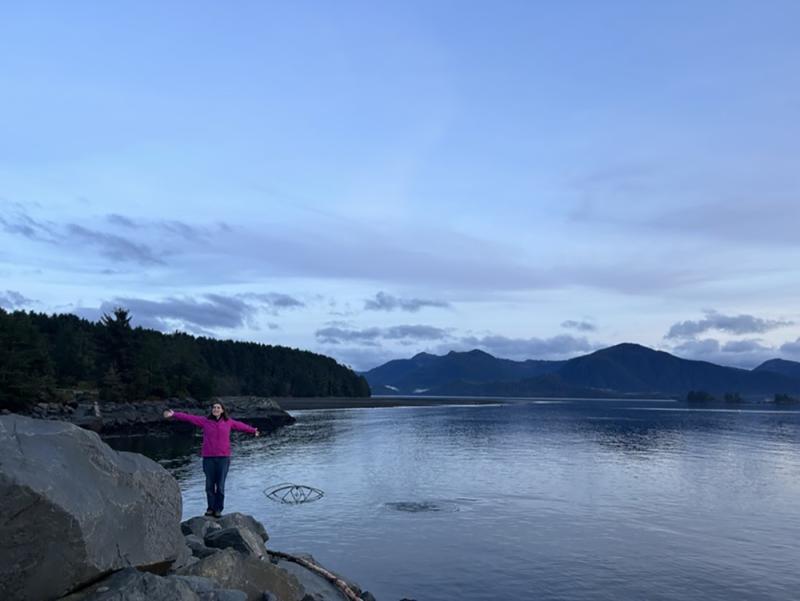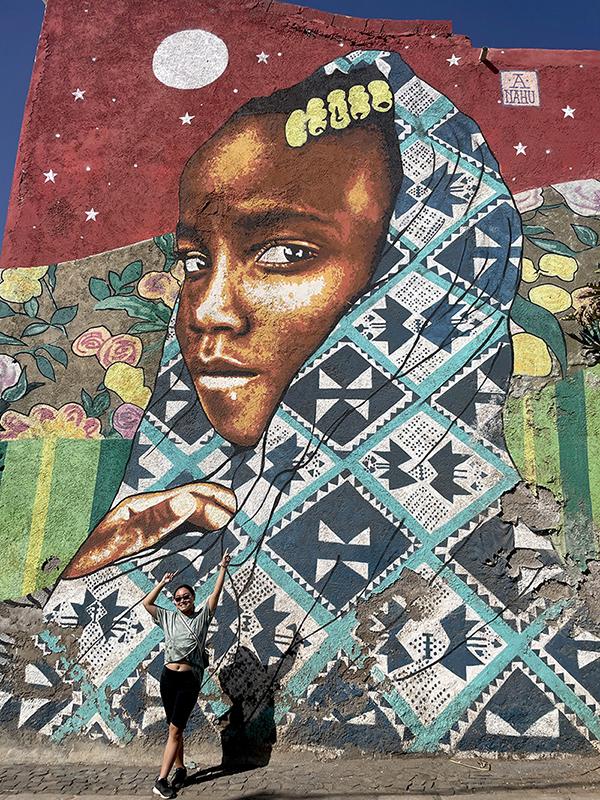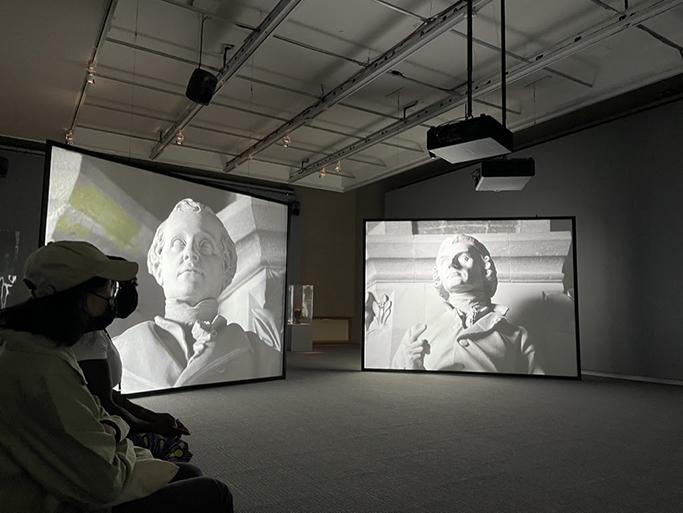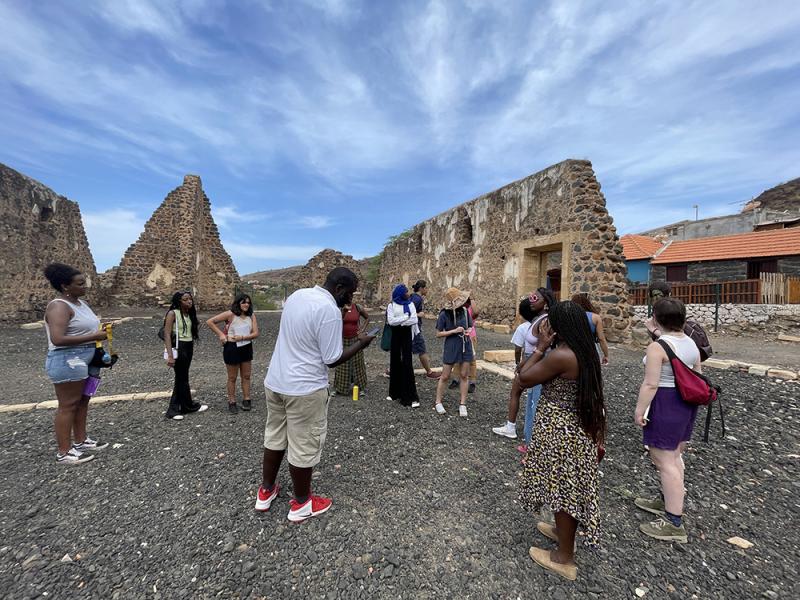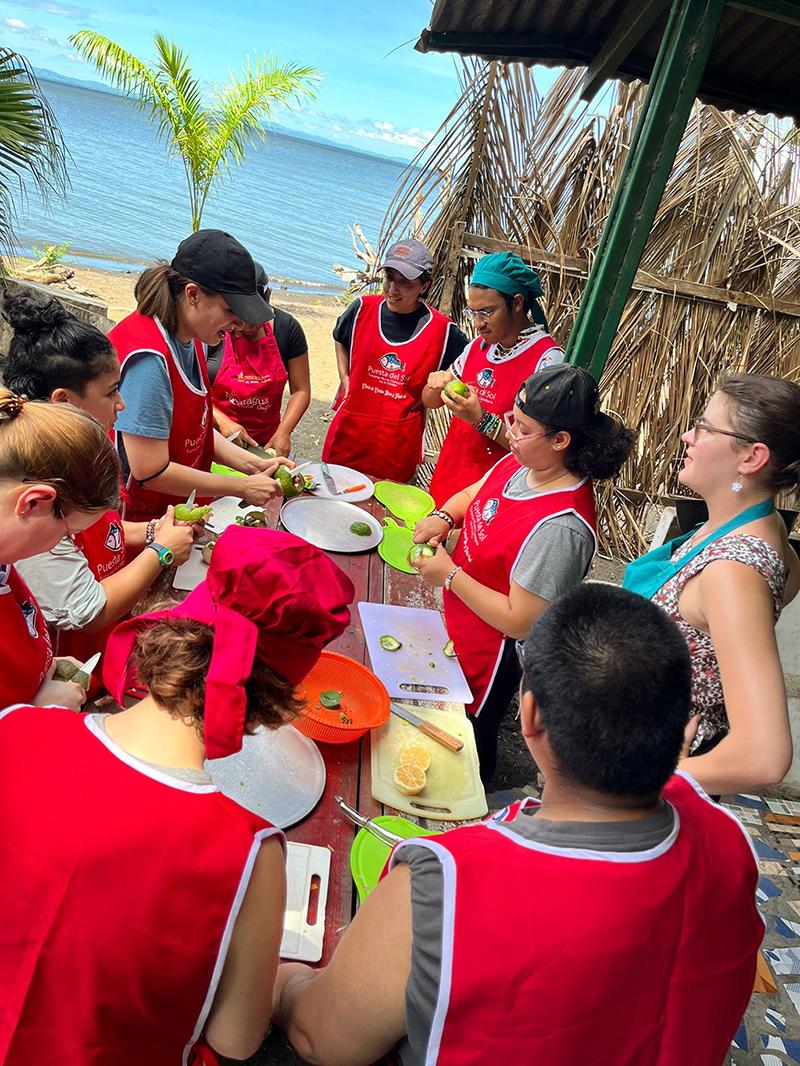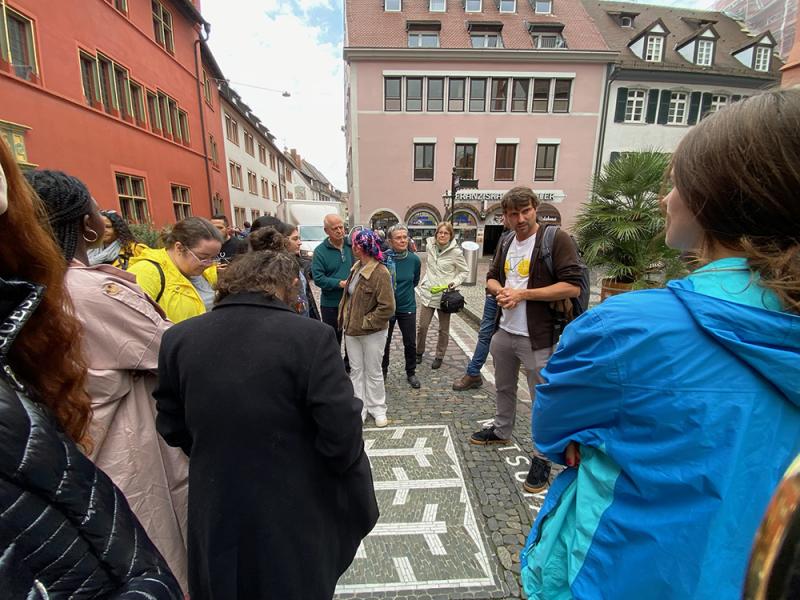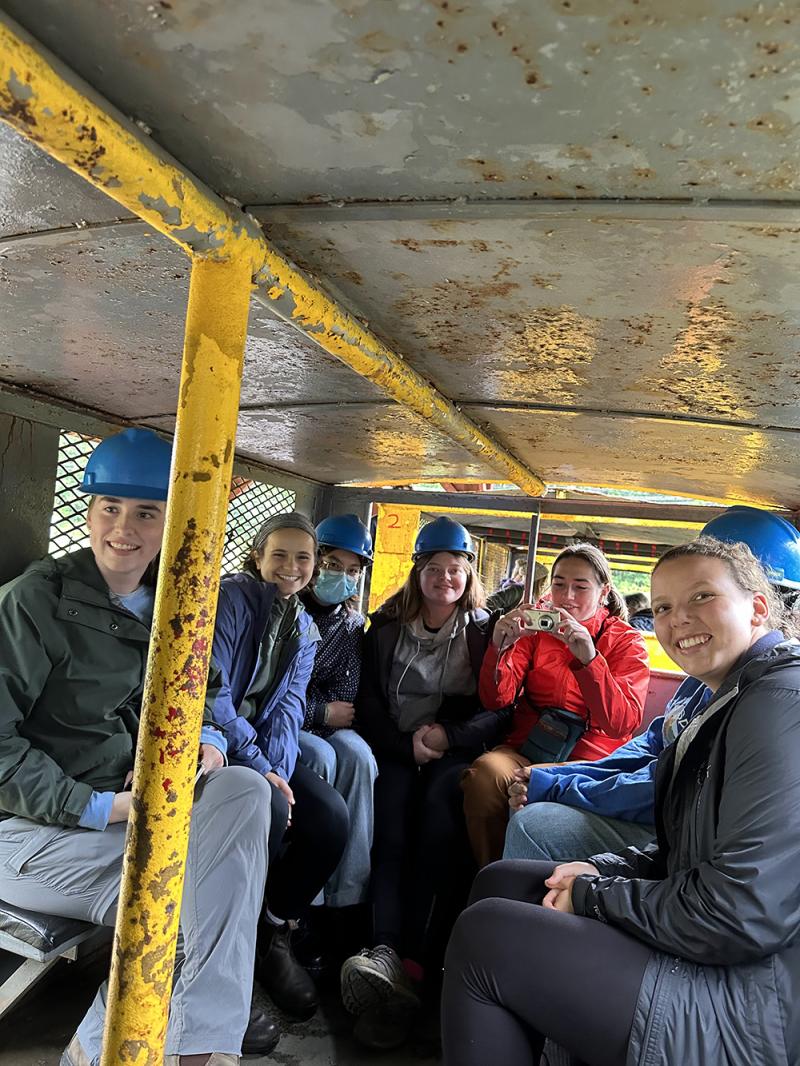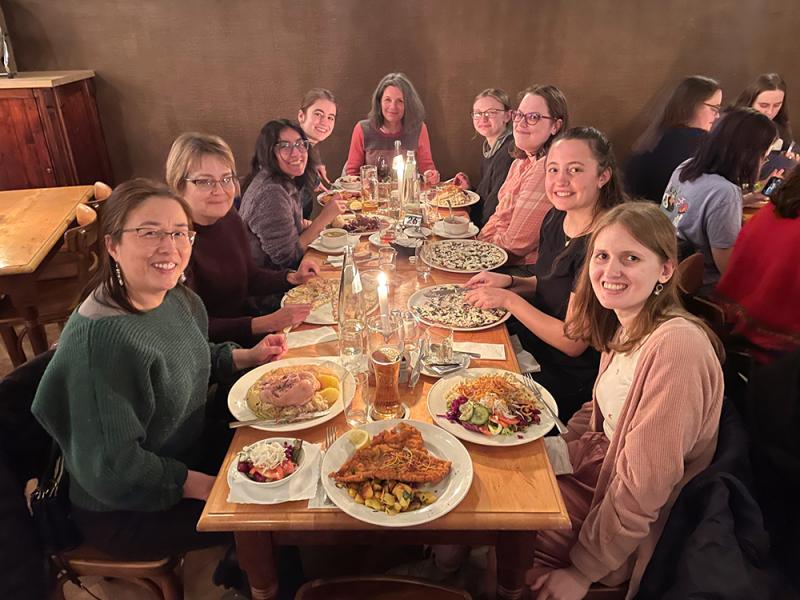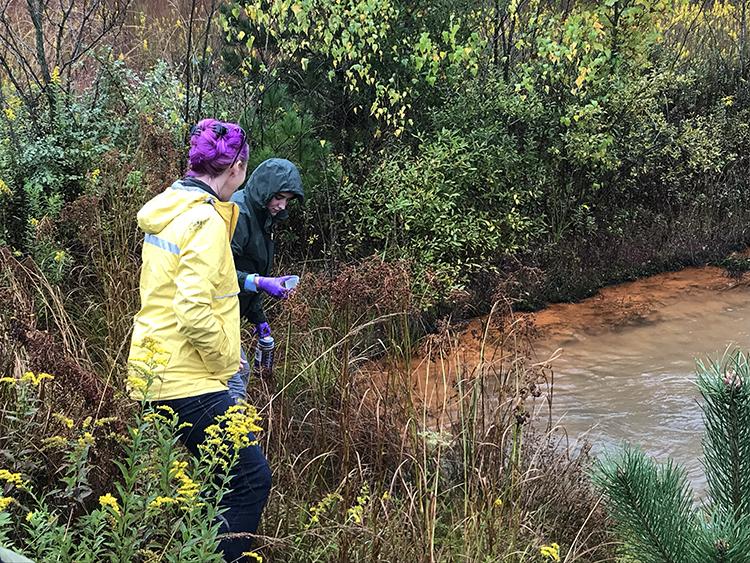
360° Learning Without Limits
For nearly 15 years, Bryn Mawr's 360° program has challenged students and faculty to take an expansive look at big questions.
INTERDISCIPLINARY.
EXPERIENTIAL.
COLLABORATIVE.
TRANSFORMATIVE.
These are a few of the words you could use to describe Bryn Mawr’s ambitous 360° Program, which brings together faculty and students from different disciplines and majors to participate in a “cluster” of courses all focused on a single theme, issue, or research question.
Ask faculty and students about the program and you’ll hear plenty of superlatives.
“The 360 Program has the potential to be the greatest intellectual experience that a student will have at Bryn Mawr and probably in their lives,” says Associate Professor of Political Science Joel Schlosser, who has taught in the course clusters Arts of Resistance, Science, Power, and Truth, and Energy Afterlives. (This semester he’s working with Professor of French and Francophone Studies Rudy Le Menthéour and Associate Professor of Anthropology Casey R. Barrier to teach Origins of Freedom.)
“The 360s are a phenomenal way to get students out there in the world, and to build community,” says Adalia X. Rodriguez ’24, who was part of Nicaragua: Places and Names during Fall 2023. Taught by Associate Professor of Geology Pedro Marenco and Brook Lillehaugen, an associate professor of linguistics in the TriCo linguistics department, the cluster explored “the ongoing interconnectedness between landscape and language” and featured field study in Nicaragua, home to 19 active volcanoes and a mountain range that divides language groups. “It’s sometimes hard to bridge the gap between STEM and the humanities,” says Rodriguez, a geology major, “but this was a really cool collaboration, and I enjoyed every single second of it.”
Kimiye Maeshiro ’23 speaks passionately about her senior-year experience in the cluster Paradigms of Revival, a deep dive into the ways colonialism has captured and commodified Blackness, taught by Assistant Professor and Director of Dance Lela Aisha Jones, Assistant Professor of Education Chanelle Wilson, and Associate Professor of History of Art and Museum Studies Director Monique Renee Scott.
“Being able to study something not just with the perspective of my major, but also different fields and modes of knowledge, was really powerful,” says Maeshiro, now a Bryn Mawr admissions counselor. Also unforgettable for her was the field trip to Cape Verde in West Africa. “That was a very tactile learning experience,” she says. “I think higher education sometimes forgets that the things we study are ultimately connected to what it means to be human and to live in this world. And I think the 360s do a really good job at having that human connection be the focal point.”
Nearly 15 years ago, Bryn Mawr had been looking at how to engage in interdisciplinary learning in new and thoughtful ways when Professor of Sociology David Karen heard about Dickinson College’s Mosaic Program, which had students design their own course clusters. “He thought, ‘Well, that’s cool, but it’s a lot of work for the students,’” says 360 Program Coordinator Sarah Theobald ’12.
Karen shared the idea with then-Provost Kim Cassidy, who put together a faculty steering committee that devised a different model for Bryn Mawr, which would rely on faculty members collaborating to design suites of related classes and activities.
The first cluster offered by the fledgling program (called Kaleidoscope in its early days) debuted in Fall 2010 and spanned a full year with five courses on the topic of Changing Education, inspired by Bryn Mawr’s 125th anniversary.
“[Initially] we thought it would be easier for students if they just handed over their whole semester,” says Theobald. “We learned that was wrong, because there are often other courses students need to be taking, whether for a major or a College-wide requirement.”
Now, most 360 clusters typically consist of three, or occasionally two, classes in a single semester. Students must apply to the program and then enroll in all courses in their chosen cluster and participate in all of its activities. They also must be available for domestic and international field study trips that are a hallmark of the 360 Program and typically taken during fall or spring breaks—with all travel expenses paid by the College.
Participants in 360 also share what they’ve learned with the Bryn Mawr community and beyond. This can take various forms, such as exhibits, performances, or presentations. In addition, each cluster has a designated student, hired by the program, who shares updates on the group’s activities on social media. (Learn about recent clusters at instagram.com/bmc360program.)
For students, focusing on a single topic throughout a semester can be a revelation. “I liked having the opportunity to take three classes with all the same people, and with professors collaborating on the content,” says Nisha Marino ’24, who participated in Fall 2023’s Energy Afterlives. “[The 360] was kind of what I was looking for in a liberal arts college—not just the ability to take classes in different departments but also to apply what I’m learning in one discipline to other disciplines. That’s how I like to think about things, [with] all of the different disciplines connected.”
Energy Afterlives, which delved into the question, “What comes in the wake of energy extraction?,” was taught by Schlosser alongside Associate Professor of Geology Selby Hearth and Assistant Professor of Russian José Vergara. It included trips to a Central Pennsylvania mining town as well as Alaska.
The 360 Program has been embraced by faculty, who have created more than 50 different course clusters since 2010—many of them sparked by the casual intellectual conversations over lunch or coffee that Bryn Mawr’s intimate scale fosters. “The 360 Program is a great chance for faculty to test out some new area of research, or a topic for a course that might not necessarily fit into their typical department curriculum,” says Theobald, who observes that courses built for a 360 may also go on to be taught as standalones. “That’s exciting and it’s also a productive use of faculty time and program resources.”
Although designing a course with other professors can have its challenges, the effort is well worth it, says Carol Hager, a professor of environmental studies and political science who teaches in the cluster Climate Change: Science and Politics, offered four times so far. “Ideally, you need to be really collaborative, but that’s also the fun of it—because we want to learn something, too.”
This semester, Hager is teaching in the Europe from the Margins cluster, which looks at those left out of mainstream narratives; it will include a packed trip to Berlin, where students will meet with artists, activists, and organizations advocating for refugees, immigrants, and the LGBTQ community. Her collaborators are Associate Professor of German Qinna Shen and Anita Kurimay, associate professor of history and director of Gender and Sexuality Studies.
“We like to break the boundaries of our own fields and to think across them,” Hager says. “It’s not always easy to find a common language, but it’s good, hard work and I like modeling that for the students.”
Hager also appreciates the 360 Program’s focus on experiential learning and travel.“You’re not just feeding them the experience,” she says. “You’re putting them in places where they can get inspired, where they can really catch fire. It’s wonderful to see that—when a student finds something in the world that really moves them. I think that’s just about the best experience you can have as a teacher.”
For Professor of Psychology Marc Schulz, another benefit of the 360 Program is that it can be a way “to put students and faculty on more of a level playing field.” Schulz, who has taught in the Space and Identity and Contemplative Traditions clusters, says this can happen when professors sit in on the other classes in a cluster. “I think students enjoy watching faculty ask questions that they might ask.”
The experiential learning components of the 360s, such as the mindfulness group that is an element of Contemplative Traditions, along with a 10-day trip to Japan, also put faculty and students side by side, says Schulz. Groups have had to deal with typhoons, changes in itinerary, lost passports, even cell phones dropped into toilets. Schulz once found himself helping a student with a fear of heights scale a wall. “I had to help her climb that ladder, literally. I help students do that all the time metaphorically. But I’ve never had to do it, physically, outside of class.”
Those kinds of experiences create deep bonds, he says. “The connections I’ve made with the faculty I have taught with have been really important to me, and I think it’s true for students. There are cohorts who have gone through a 360 and remained close friends. They come together for reunions and write letters to faculty members.”
Joel Schlosser agrees that the 360 trips can be about bonding and connection, but it’s the program’s core educational mission he values most. “One of the things that liberal arts colleges do better than any other kind of institution is learning and collaborating across disciplinary boundaries, and you don’t need a trip to do that. You need faculty who are dedicated and encouraged to do it, and students who have space in their schedules.
“It’s really that kind of thinking that we need more of in the world,” he adds. “We need people who aren’t just putting their stakes down in the territory they’re experts on, but are willing to learn from one another, and listen to one another.”

